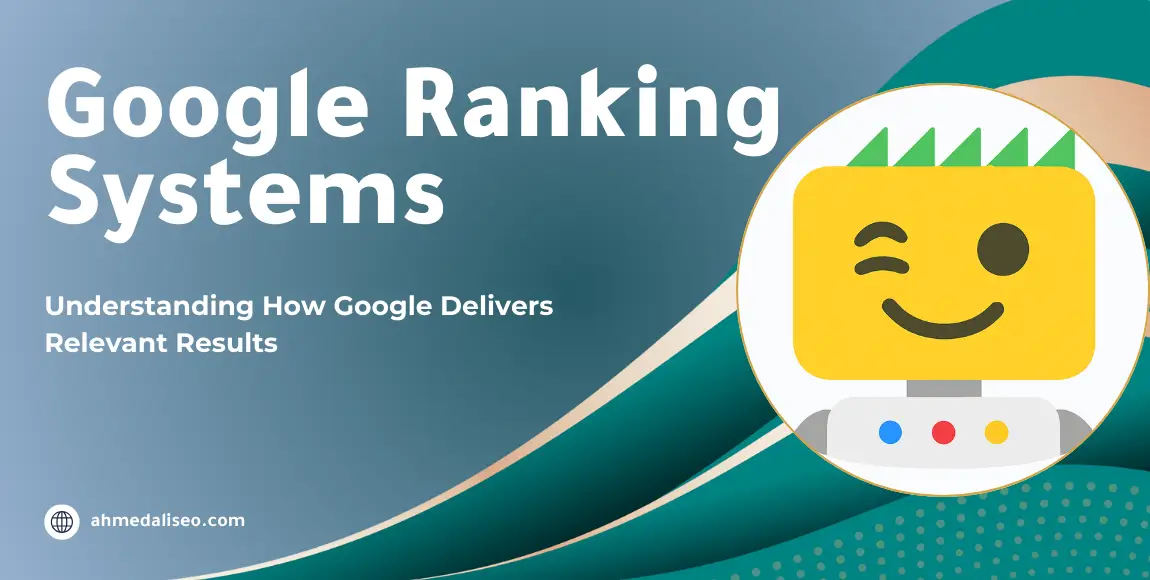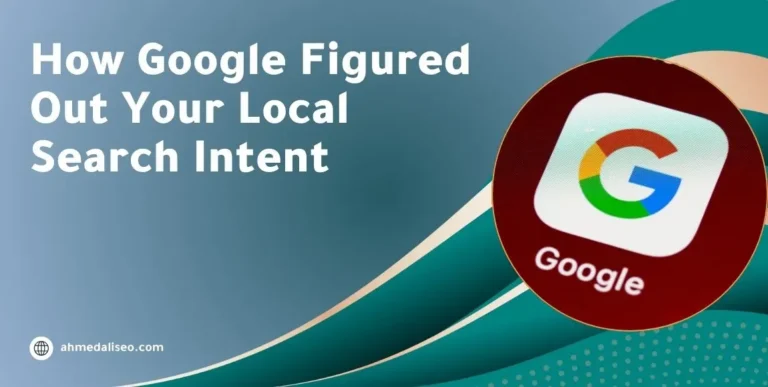
Every day, Google Search processes billions of queries and sifting through hundreds of billions of web pages and other indexed content in a fraction of a second .. and To achieve this monumental task and deliver the most relevant, useful, and reliable results Google employs a complex suite of automated ranking systems.
These systems analyze a vast array of factors and signals associated with content.
i’ll provides insight into some of Google’s most significant ranking systems, drawing upon information directly from Google and established knowledge in the SEO field.
Notable Active Google Ranking Systems
Here are some of the key systems currently influencing Google Search results:
BERT (Bidirectional Encoder Representations from Transformers)
- What it is: A sophisticated AI and Natural Language Processing (NLP) system based on transformer architecture.
- Purpose: BERT enables Google to understand the nuances and context of words within search queries and content. It focuses on how word combinations express different meanings and intents, moving beyond simple keyword matching.
- Impact: Allows Search to better comprehend conversational or complex queries and match them with content that accurately addresses the underlying meaning, even if the exact keywords aren’t present. (EEAT: Demonstrates Google’s expertise in AI and NLP).
Crisis Information Systems
- What it is: A set of systems designed to surface critical information during crises.
- Purpose: To provide timely, authoritative, and actionable information when users need it most.
- Components: Personal Crisis, Identifies queries related to suicide, sexual assault, poisoning, domestic violence, or substance abuse. It surfaces contact information for trusted support organizations and relevant helplines. (EEAT/HCU: Prioritizes user well-being and trustworthy resources).
- SOS Alerts: Activated during natural disasters (earthquakes, floods, wildfires) or other widespread crises. Displays updates from official authorities, emergency contacts, maps, safety tips, and donation links. (EEAT/HCU: Leverages authoritative sources for public safety).
Deduplication Systems
- What it is: Algorithms designed to manage redundancy in search results.
- Purpose: To avoid showing multiple pages with very similar content for the same query, thus providing a cleaner, more efficient user experience. Only the most relevant or canonical version is typically shown.
- Impact: Reduces clutter. This also applies to featured snippets; if a page is shown as a featured snippet, its regular “blue link” result is typically removed from the first page. Users can often find omitted results via a link at the bottom of the SERP if needed.
Exact Match Domain (EMD) System
- What it is: A specific signal adjustment related to domain names.
- Purpose: Prevents undue ranking credit for websites using domain names that exactly match high-value search queries (e.g., best-chicago-plumbers.com). While keywords in a domain can be a minor signal, this system ensures it’s not overweighted, prioritizing actual content quality and relevance.
- Impact: Discourages the practice of registering keyword-stuffed domains solely for ranking purposes.
Freshness Systems (Query Deserves Freshness – QDF) System
What it is: A collection of algorithms that prioritize recent content when timeliness is relevant.
Purpose: To deliver up-to-date information for queries where recency is crucial.
Impact: Queries about ongoing events (e.g., “latest election results”), recent happenings (e.g., “earthquake today”), product releases, or recurring events often trigger these systems to rank newer content more prominently.
Link Analysis Systems & PageRank System
- What it is: Systems, including the foundational PageRank algorithm, that analyze the web’s link structure. (The original PageRank concept is detailed in its research paper and patent).
- Purpose: To understand relationships between pages, determine page authority, and assess relevance based on how pages link to each other. Links from reputable, relevant pages act as votes of confidence.
- Impact: PageRank, though significantly evolved since its inception, remains a part of Google’s core ranking systems. Link analysis helps identify authoritative and trustworthy sources. (EEAT: Uses external validation/links as a signal of authority).
Local News Systems System
- What it is: Systems designed to identify and surface news content from local sources.
- Purpose: To provide relevant local perspectives on news events, especially within features like “Top Stories” or dedicated “Local News” sections.
- Impact: Enhances the visibility of local journalism when user query intent suggests a need for local information.
MUM (Multitask Unified Model) System
- What it is: An advanced AI model capable of understanding and generating language across various tasks and languages. It’s significantly more powerful than BERT.
- Purpose: Currently used for specific, complex applications within Search, not general ranking. Examples include enhancing searches for COVID-19 vaccine information and improving the callouts accompanying featured snippets.
- Impact: Demonstrates Google’s cutting-edge AI research (EEAT), applied selectively to improve user experience in complex information retrieval scenarios. (Note: Its role may expand in the future).
Neural Matching System
- What it is: An AI-based system that goes beyond keywords to understand underlying concepts.
- Purpose: To connect the concepts expressed in a user’s query with the concepts represented in web pages, even if they don’t use the same terminology.
- Impact: Improves relevance by understanding synonyms, related ideas, and broader topics, leading to results that better match the user’s intent.
Original Content Systems
- What it is: Systems focused on identifying and prioritizing original content.
- Purpose: To reward pages that provide unique value, original reporting, in-depth analysis, or original research, ranking them above pages that simply aggregate or lightly rewrite existing content. Supports the use of canonical tags (rel=”canonical”) to help identify the preferred version of duplicated content.
- Impact: Directly supports HCU principles by valuing unique, substantive content. (EEAT: Rewards original work and expertise).
Passage Ranking System
- What it is: An AI system that can identify and understand the relevance of specific sections or “passages” within a web page.
- Purpose: To surface pages where the most relevant information might be deep within the content, rather than just in the main headings or introduction.
- Impact: Allows Google to rank highly relevant parts of a page, even if the page covers multiple topics, improving results for very specific, long-tail queries.
RankBrain System
- What it is: An AI system, one of Google’s first major machine-learning applications in ranking.
- Purpose: Helps Google understand the relationship between words and abstract concepts, enabling it to interpret novel or ambiguous queries (those it hasn’t seen often before) and find relevant content that might not contain the exact query terms.
- Impact: Improves Google’s ability to handle the ~15% of daily queries that are entirely new, by relating them to known concepts.
Reliable Information Systems
- What it is: A suite of systems working together to assess and elevate information quality and reliability.
- Purpose: To promote authoritative sources, demote low-quality or potentially misleading content, and elevate quality journalism, particularly for sensitive topics (like health, finance, civic information – often termed YMYL: Your Money or Your Life).
- Impact: Includes mechanisms to display content advisories for rapidly evolving topics or when confidence in the overall quality of available results is low. This aligns directly with EEAT (emphasizing Authoritativeness and Trustworthiness) and HCU.
Removal-Based Demotion Systems
- What it is: Systems that use high volumes of certain types of content removals as a demotion signal for a site.
- Purpose: To reduce the visibility of sites that repeatedly host problematic content.
- Triggers: Legal Removals: High volume of valid copyright (DMCA) takedowns, defamation, counterfeit goods, or court-ordered removals can lead to demotion of other content from the site. This strongly applies to Child Sexual Abuse Material (CSAM), where content is removed and sites with high proportions are demoted.
- Personal Information Removals: High volume of removals related to personal information on sites with exploitative practices (e.g., charging for removal), doxxing, non-consensual explicit imagery (real or fake) can trigger demotions.
- Impact: Acts as a strong deterrent against hosting harmful or illegal content at scale. (EEAT: Reinforces Trustworthiness by penalizing bad actors).
Reviews System
- What it is: Algorithms specifically designed to evaluate review-style content (products, services, destinations, etc.).
- Purpose: To reward high-quality reviews that offer insightful analysis, original research, evidence of expertise, and are written by genuine experts or enthusiasts familiar with the topic. It aims to surface authentic and helpful reviews over thin or unoriginal ones.
- Impact: Encourages content creators to produce truly valuable reviews based on actual experience and knowledge. Aligns with HCU and EEAT (Experience, Expertise).
Site Diversity System
- What it is: A system designed to limit the number of results from the same website in the top search results.
- Purpose: To provide a greater variety of perspectives and sources to users for most queries.
- Impact: Generally, Google aims to show no more than two results from the same domain (including subdomains, usually treated as part of the root domain) in the top results. Exceptions exist if the system determines more results from one site are particularly relevant for a specific query.
Spam Detection Systems (including SpamBrain) System
- What it is: A suite of AI-based and other systems designed to identify and neutralize webspam. SpamBrain is a key AI-powered component.
- Purpose: To prevent content that violates Google’s spam policies (e.g., cloaking, auto-generated content, scraped content, link schemes) from appearing in search results and degrading quality.
- Impact: Crucial for maintaining the usability and trustworthiness of Search. These systems are constantly updated to combat evolving spam tactics.
Retired Systems (Integrated into Core Ranking)
These systems are noted for historical context. Their functionalities or principles have been incorporated into successor systems or are now part of Google’s core ranking algorithms:
Helpful Content System
Launched in 2022, this system focused on rewarding people-first content. As of March 2024, its signals and classifiers are integrated directly into the core ranking systems. Assessing content helpfulness is now a continuous, fundamental part of ranking, not tied to a specific named update.
Hummingbird System
A major overhaul of the core algorithm in 2013, focusing on semantic search and understanding query intent. Its principles are foundational to modern Search, which has continued to evolve significantly since.
Panda System
Launched in 2011, targeted low-quality content (e.g., thin content, content farms). It was integrated into the core ranking algorithms around 2015. Its principles regarding content quality remain vital.
Penguin System
Launched in 2012, focused on combating manipulative link schemes and link spam. It was integrated into the core ranking systems (operating in real-time) in 2016. Its principles regarding link quality persist.
Conclusion
Google’s ranking systems form a complex, dynamic, and interconnected ecosystem. While understanding individual systems provides valuable context, it’s crucial to remember they work together, constantly being refined through AI and machine learning. Google does not reveal the precise weighting or interplay of these systems.
For creators, developers, and SEO professionals, the most effective strategy remains focused on creating genuinely helpful, reliable, people-first content that demonstrates expertise, offers a positive user experience, and adheres to Google’s technical and quality guidelines. By prioritizing user value, you align your efforts with the fundamental goals of Google Search’s ranking systems.

